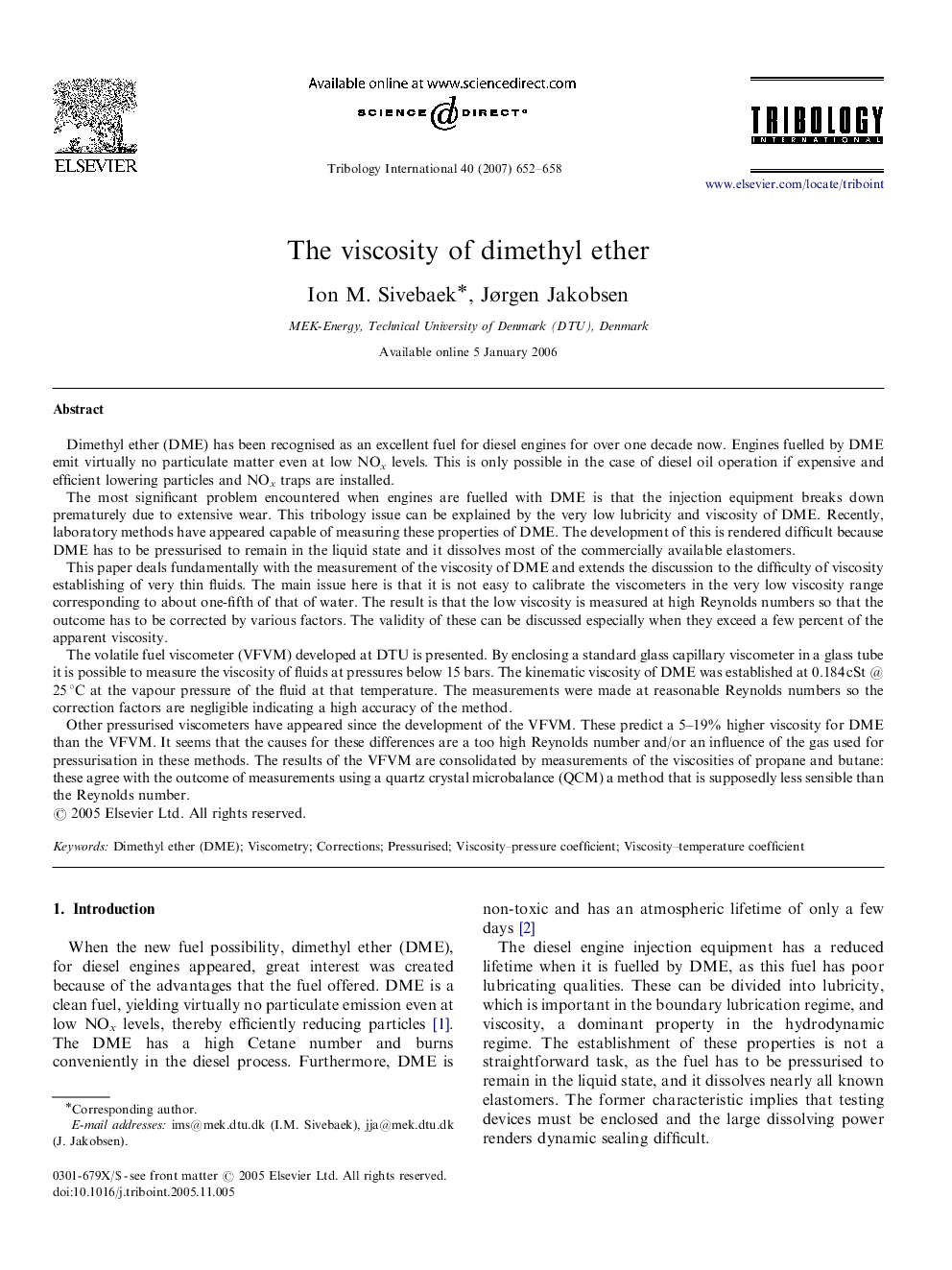| کد مقاله | کد نشریه | سال انتشار | مقاله انگلیسی | نسخه تمام متن |
|---|---|---|---|---|
| 616158 | 881475 | 2007 | 7 صفحه PDF | دانلود رایگان |

Dimethyl ether (DME) has been recognised as an excellent fuel for diesel engines for over one decade now. Engines fuelled by DME emit virtually no particulate matter even at low NOx levels. This is only possible in the case of diesel oil operation if expensive and efficient lowering particles and NOx traps are installed.The most significant problem encountered when engines are fuelled with DME is that the injection equipment breaks down prematurely due to extensive wear. This tribology issue can be explained by the very low lubricity and viscosity of DME. Recently, laboratory methods have appeared capable of measuring these properties of DME. The development of this is rendered difficult because DME has to be pressurised to remain in the liquid state and it dissolves most of the commercially available elastomers.This paper deals fundamentally with the measurement of the viscosity of DME and extends the discussion to the difficulty of viscosity establishing of very thin fluids. The main issue here is that it is not easy to calibrate the viscometers in the very low viscosity range corresponding to about one-fifth of that of water. The result is that the low viscosity is measured at high Reynolds numbers so that the outcome has to be corrected by various factors. The validity of these can be discussed especially when they exceed a few percent of the apparent viscosity.The volatile fuel viscometer (VFVM) developed at DTU is presented. By enclosing a standard glass capillary viscometer in a glass tube it is possible to measure the viscosity of fluids at pressures below 15 bars. The kinematic viscosity of DME was established at 0.184 cSt @ 25 °C at the vapour pressure of the fluid at that temperature. The measurements were made at reasonable Reynolds numbers so the correction factors are negligible indicating a high accuracy of the method.Other pressurised viscometers have appeared since the development of the VFVM. These predict a 5–19% higher viscosity for DME than the VFVM. It seems that the causes for these differences are a too high Reynolds number and/or an influence of the gas used for pressurisation in these methods. The results of the VFVM are consolidated by measurements of the viscosities of propane and butane: these agree with the outcome of measurements using a quartz crystal microbalance (QCM) a method that is supposedly less sensible than the Reynolds number.
Journal: Tribology International - Volume 40, Issue 4, April 2007, Pages 652–658